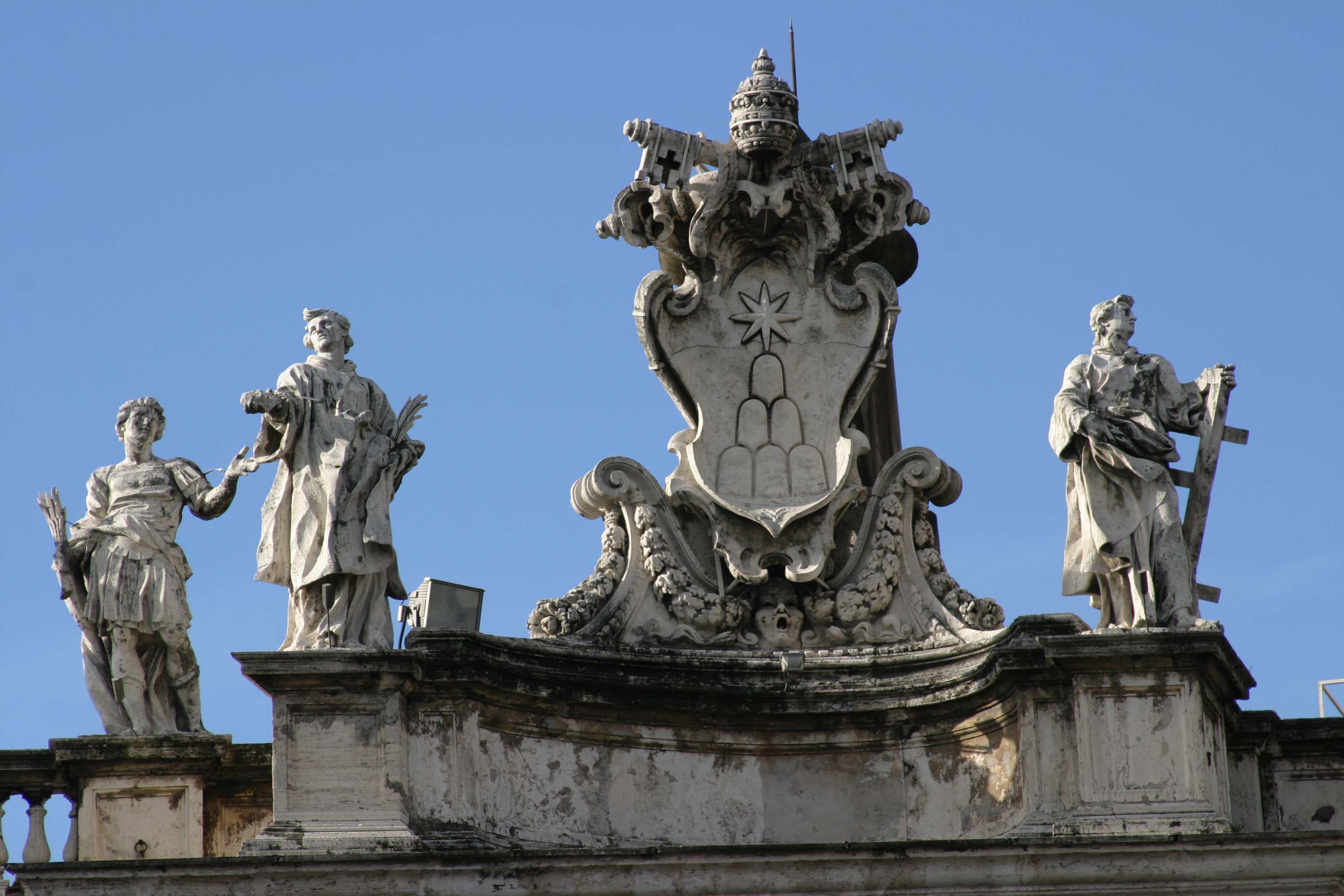
The other three (descending) are one brick deep, two and a half, and half -this lowest band is on a low concrete ground-plinth.

The upper one is quite far down from the top of the wall, and is two vertical bricks deep separated by another wide mortar joint. However, each wall has a set of horizontal stripes formed by laying a course or courses of bricks vertically on edge and separating them from the main brickwork by wide mortar joints. The brickwork of these walls is finely laid, with thin mortar joints, and is mostly blank. The top of each side wall slopes downwards towards the central side gap. These gaps are filled with fenestration in clear glass, having metal bar mullions in rectangles. Similarly, there is a gap between the pair of walls on each side. There are wide gaps between the two front walls and the front side walls, matched between the back wall and the rear side walls. To start with, seven free-standing walls in high-quality pink brickwork stand on the sides of the octagon of the plan (the two back sides of the church are occupied by a single angled wall). The structure of the church is actually quite accomplished, and takes some describing. Behind this is a small semi-cylindrical annexe which is the confessional. On the near right hand side is a trapezoidal ferial chapel (for weekday Masses), with the base of the trapezoid abutting the near right hand side wall of the church. Off the far left hand side is an external sacristy corridor, having the form of a very narrow triangle created by providing a wall on the same axis as the near left hand side of the octagon. The short ends of the "rectangle" also have a slight outward angle. The plan of the church looks rectangular at first glance, but is actually a symmetrical irregular octagon with each long side of the apparent rectangle being formed from two sides of the octagon at a very obtuse angle. This boundary wall has rectangular sections cut out of it from the top, into which are inserted glazed panels with metal mullion bars which are both vertical and diagonal, giving a superimposed X and cross pattern. The masonry is interspersed by thin bands of red brick, mimicking an ancient Roman building technique called opus vittatum. The property is enclosed by a wall in grey tufa ashlar blocks, with rough faces but very thin joints. This provides an entrance courtyard, and a drive down the left hand side to the parish facilities at the back of the church. It is on a corner site with a street down its left hand side (Via Eugenio Torelli), but is set back from the street frontages at this side and at front. The church is part of a larger complex of buildings forming a sports and social centre for the suburb. He is head of the Ethiopian Catholic Church. It was made titular in 2015, the first cardinal priest being Berhaneyesus Demerew Souraphiel. It replaced a nearby temporary building on the Via della Cave di Pietralata.

The permanent church was completed in 2004, to a design by Igino Pineschi. The parish was erected in 1973, the territory being taken from that of Sant'Atanasio a Via Tiburtina.


 0 kommentar(er)
0 kommentar(er)
